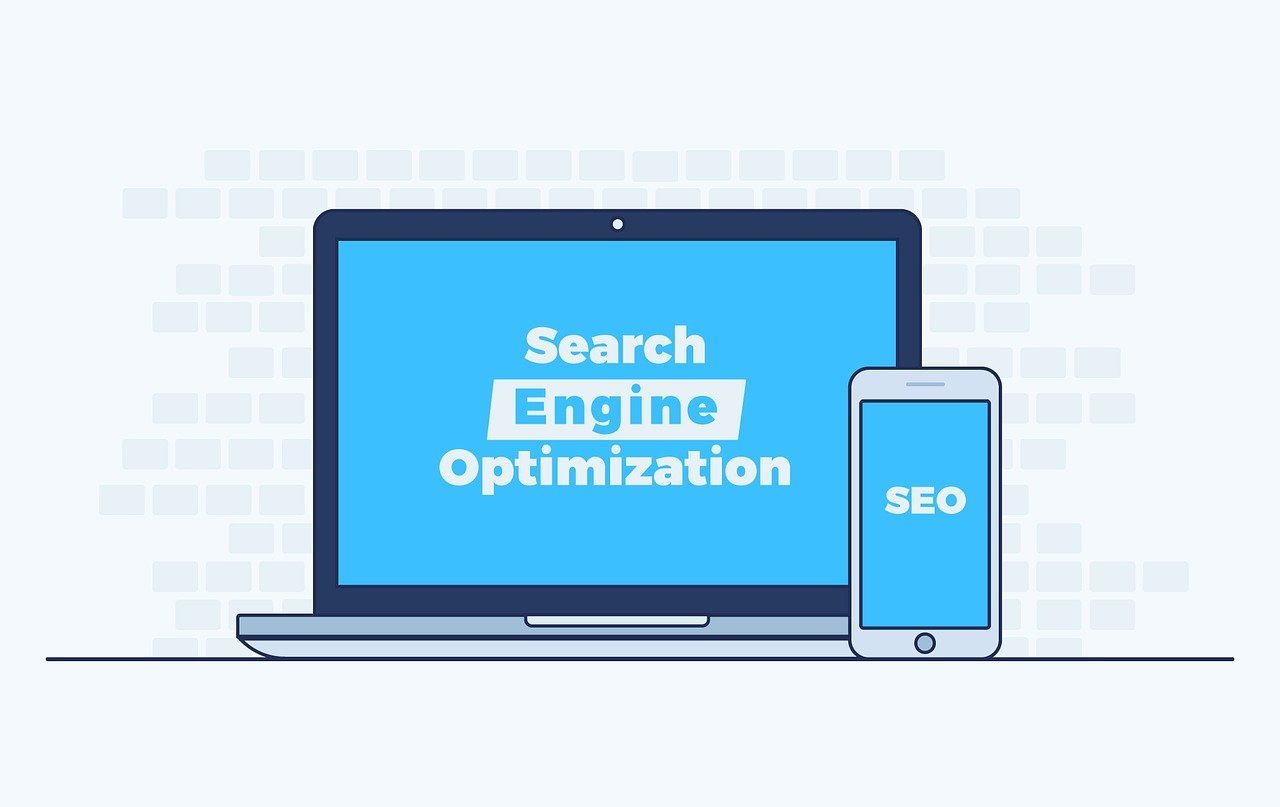Being visible on the internet is a cornerstone of success as a business today. A large part of customers’ purchasing decisions and research begins on the internet, and with that said, you naturally want customers to find you and not your competitors.
A key component to achieving this is conducting effective keyword analysis. Search engine optimization is the work of optimizing your website so that it appears higher in the search results. Part of the work with search engine optimization (SEO) is to do a keyword analysis to be able to identify and use the right keywords.
Keyword analysis involves examining and identifying the words and phrases that users search for on search engines. Basically, this is about understanding user intentions and behaviors to create a strategy that effectively reaches and engages the target audience.
Due to the important role that keyword analysis plays in search engine optimization, we are going to dive deeper into this topic and look at how to carry out a successful one that leads to improved results.
Why is keyword analysis important?
As we have discussed, keyword analysis is an important part of increasing your online visibility. Below we explore some of the key reasons why keyword analysis is vital for websites and digital marketing.
Keyword analysis provides deeper insight into what users are actually searching for. By understanding the search terms and queries your target audience uses, you can create content that directly responds to user needs and is tailored to appeal to your target audience. This increases the chance of attracting relevant visitors to the website but also builds a stronger connection between your company and your target audience.
Improving the SEO strategy
Keyword analysis plays a central role in an effective search engine optimization (SEO) strategy. By identifying the most relevant and searched words within your industry, you can better customize your website and create a strategy based on these to rank higher in search results. A higher placement increases visibility and the likelihood that visitors will click on your link instead of your competitors’. In the long run, this means more sales.
Effective marketing and advertising
When it comes to marketing, you want every penny to go as far as it will go. By basing your marketing campaigns on what you learn from your keyword analysis, you can create more effective marketing campaigns and maximize results. With the keywords you identify, ads and campaigns can easily be tailored to target the exact search terms used by their target audience, increasing the chance of reaching the right audience and generating conversions.
Steps for conducting a keyword analysis
Conducting a keyword analysis is actually quite simple – especially with the help of all the tools available.
Here are some important steps to successfully conduct a keyword analysis:
Research and identification of relevant subject areas
Define the main business or website themes: Start by identifying the overarching subject areas relevant to your business or website. This can be products, your industry, services or topics that are closely related to your target audience’s interests.
Create a list of main keywords: Create a list of common keywords and phrases that relate to these main themes. This will form the basis of your keyword analysis. For example, if you are a car dealer, these keywords could be “used car”, “car”, and so on.
Use of tools to generate keywords
Google Keyword Planner: By far the best and most popular tool for identifying keywords is the Google Keyword Planner. There are also other tools that you can try. These tools make it possible, based on a few keywords, to get a list of a variety of other related keywords. Google Keyword Planner also gives you insights into search frequency and competition for each keyword. Look for high-performing keywords that have a balance between relevance and search volume. You don’t want to use keywords that have very low search volume, but at the same time, you want to choose ones that are relevant to you.
Research competitor keywords: Analyze competitors’ websites to identify which keywords they are targeting. This not only provides inspiration but also helps to understand the competitive situation.
Evaluation of the competition for selected keywords
Competitive analysis: When identifying keywords, you should evaluate the competitive situation of the selected keywords. Try to find out which other websites are also focusing on the same keywords and evaluate their strengths and weaknesses.
Long tail keywords: Most commonly known as “long tail keywords” are longer and more specific keywords and search phrases. For example, instead of “shoes” a long tail keyword is “red shoes in Jersey”. Long tail keywords are good because they have significantly lower competition but at the same time higher relevance, which makes it easier to rank well for these.
Selection of optimal keywords based on relevance and demand
Prioritize the keywords: When doing your keyword analysis, choose the keywords that are most relevant to your business and target audience. At the same time, you should find a balance with search volume so that you focus on keywords that actually have search volume and that people actually use.
Create a Final List: Once you’ve done your keyword analysis and identified the most appropriate keywords, it’s time to compile a final list of keywords and phrases that you can implement into your content strategy and search engine optimization.
Keyword analysis tools
Keyword analysis is quite easy with the right tools. We’ve already looked briefly at Google Keyword Planner, but there are other keyword tools you can use. Here are the most popular:
Google Keyword Planner
Features:
Keyword Ideas: Generate ideas for new keywords based on your business area.
Search volume and competition: Get insights into how often the keywords are used and how high the competition is.
Click and Cost Forecasts: Create an estimate of potential clicks and costs for ad campaigns on Google Ads (if you want to focus on paid ads rather than SEO).
Starting point: Use the Keyword Planner to create a basic list of keywords and get an understanding of their potential performance.
SEMrush
Features:
Organic Keyword Analysis: Identify organic keywords that your competitors are ranking for.
Keyword Position Tracking: Track your and your competitors’ positions for specific keywords over time.
Backlink Analysis: Gain insights into links pointing to your site and competitors’ sites.
Competitive Analysis: Use SEMrush to analyze your competitors’ keyword strategies and positions.
Ahrefs
Features:
Keyword Research: Discover new keyword ideas and analyze their search volume and competition.
Site Explorer: Explore competitors’ websites to understand their top keywords and backlink strategies.
Rank Tracker: Evaluate your and competitors’ positions for selected keywords over time.
In-Depth Analysis: Use Ahrefs for a comprehensive analysis of the keyword landscape and competitors.
Other free options and their uses
Google Trends:
Seasonality: Identify trends and seasonality for specific keywords.
Geographic variation: Get insights on where in the world your keyword is most popular.
Ubersuggest:
Keyword Ideas and Competition: Generate keyword ideas and get information about the competition for each keyword.
Answer the Public:
Query-based keywords: Explore questions users ask about a specific topic to create content that directly answers their needs.
Use of Long-Tail Keywords
As we discussed above, long-tail keywords are a longer and more specific type of search query that has a lower search volume but also lower competition. A long tail keyword often consists of three or more words. As competition is so high on search engines today, long tail keywords are often a good place to start.
For example, it is better to focus on a long tail keyword that you have a chance to rank for than a broad keyword that you probably won’t rank high for. In practice, this can mean that if the long tail keyword has a significantly lower search volume, it still generates more visitors to your website (if we’re talking SEO).
An important advantage of long tail keywords is that they often have a better conversion rate. Users who search with long-tail phrases usually have a clearer intent. Tailoring your content to their exact needs increases the chance of conversions. For example, a person who adds “buy Nike shoes Borås” probably intends to buy shoes today unlike someone who only searches for “shoes”.
By focusing on long tail keywords, you can create content that directly answers the specific questions and wishes of your target group, which can contribute to higher relevance but also increased loyalty.
Examples of Effective Long-Tail Keywords
“Best vegetarian restaurants in New York”: A restaurant that optimizes for this keyword can attract a specific group of people looking for vegetarian options in New York.
“Women’s Sustainable Workout Wear”: An e-commerce site that sells sustainable workout wear can target users who are specifically interested in sustainability and women’s workout wear.
“How to fix a leaky faucet without calling a plumber”: A website that offers home improvement tips and products can attract people looking for DIY solutions to minor problems.
Implementation of Results from the Keyword Analysis
The first step in a keyword analysis is to identify suitable keywords. At the same time, this is only half the battle as the next step is to use the insights gained to shape and optimize your website strategy based on this. Here are the steps to implement the results you got from the keyword analysis.
Optimize Page Text: Based on the keywords you identified, you should incorporate these into the texts on your website. Use the keywords in a relevant way to make search engines understand that your website is relevant to these topics but also to improve the user experience and relevance when someone visits your website.
Headings and Subheadings: Be sure to use your chosen keywords in headings and subheadings to clearly signal the relevance and structure of the content.
Meta Descriptions and Meta Titles: Optimize meta descriptions and meta titles for each page and focus on including your keywords. This is important to increase the click-through rate in the search results. If a person searching for something on Google sees their exact search term in one of the search results (your website), they are more likely to click on it.
URL Structure: Customize your site’s URL structure to include relevant keywords. This makes it easier for search engines and users to understand the content of the page. For example, the structure website.com/winter-shows-women is better than “website.com/shoes/page/category59254”.
Captions and Alt Attributes: Also include your keywords in captions and alt attributes so search engines can better understand the images on your page. Keep in mind that images also rank on search engines and can drive traffic and potential customers to your website.
Internal linking: You are sure that backlinks are incredibly important in SEO work, but internal linking is something that should not be ignored either. Be sure to include internal links with anchor texts that include your keywords on your homepage. This helps create a hierarchy and indicates important pages to search engines.
Pay-Per-Click (PPC) Advertising: PPC advertising is paid advertising where you pay per click. The prime example of this is Google ads, where paid search ads are presented at the top of the search results. If you are planning to create PPC ads, a good tip is to include the keywords you have identified in your PPC ads to improve the relevance and quality of your ads.
Social Media: Another tip is to use these keywords in your social media posts and campaigns. This creates a uniform presence and increases the chance of appearing in the search results.
Email Marketing: The same goes for email marketing. To increase the relevance and therefore the effectiveness of the marketing campaign, you should use relevant keywords in the subject lines and content of your emails.
Web Analytics Tools: Once you’ve launched your campaign and started using the keywords you’ve identified, you’ll obviously want to analyze the results. Use tools like Google Analytics to track the performance and traffic of your keywords. Analyze data regularly to identify where you are performing well and what areas can be improved.
Rank Tracker Tools: When it comes to SEO, you want to regularly evaluate the position of your keywords using rank tracker tools so that you can use this information to adjust your strategy.
Measurement and Analysis of Results
Now that you’ve done your keyword analysis and implemented it into your marketing strategy, it’s time to measure and analyze the results. This is an important part of any type of marketing so that you can gain an understanding of what is working and what can be tweaked to improve results.
Use of Web Analytics Tools
Google Analytics is perhaps the most popular and best analytics tool you can use when it comes to your website marketing strategies. Start by identifying which keywords generate the most traffic to your website and which pages these users visit. The next step is to analyze the so-called “bounce rate” of traffic driven through search engines so you can better understand if visitors feel they are finding relevant and engaging content. If the bounce rate is high, it means that visitors come to your site and then leave shortly after – probably because they felt they didn’t find what they were looking for – or didn’t find it fast enough.
Last but not least, link keyword data to conversion goals to measure how well the keyword is converted into desired actions such as purchase, call, newsletter registration, or other.
Rank Tracker tool
So-called rank tracker tools aim to evaluate how well you rank on search engines. This tool is useful for being able to follow your website’s ranking for different keywords in the search results over time – and to be able to see how they change.
With this tool, you also have the ability to compare your keyword positions with those of your competitors to understand your relative strength and identify areas where you can improve your strategy.
Another tip is to try to better understand conversion paths. You can use attribution models to analyze how different keywords contribute to conversions across multiple clicks and visits.
If you use keyword-based marketing, analyze ads and adjust them based on conversion data to improve performance.
Evaluation of Keyword Performance over Time
There are several reasons why you want to evaluate keyword performance over time. First and foremost, you want to identify seasonal variations in keyword performance to adjust your strategy based on changes in demand over the year.
In addition to this, it can be good to set long-term goals for keyword performance and then regularly evaluate whether your efforts lead to increased visibility and traffic.
Based on what you learn from this analysis, you want to take steps to improve results. Take a closer look at which keywords generate the most traffic, conversions and provide the best ROI.
If certain keywords are underperforming, identify and implement improvements to improve results. This may, for example, mean replacing certain keywords that do not turn out to be relevant.
Finally, use the insights from the analysis to adjust your future keyword strategy. This may include expanding keywords related to areas that have proven successful to date as well as fine-tuning where necessary.








![76 Tips to Optimize your Website for SEO [Guide]](https://toppdomain.com/wp-content/uploads/2023/12/web-3967926_1280.jpg)